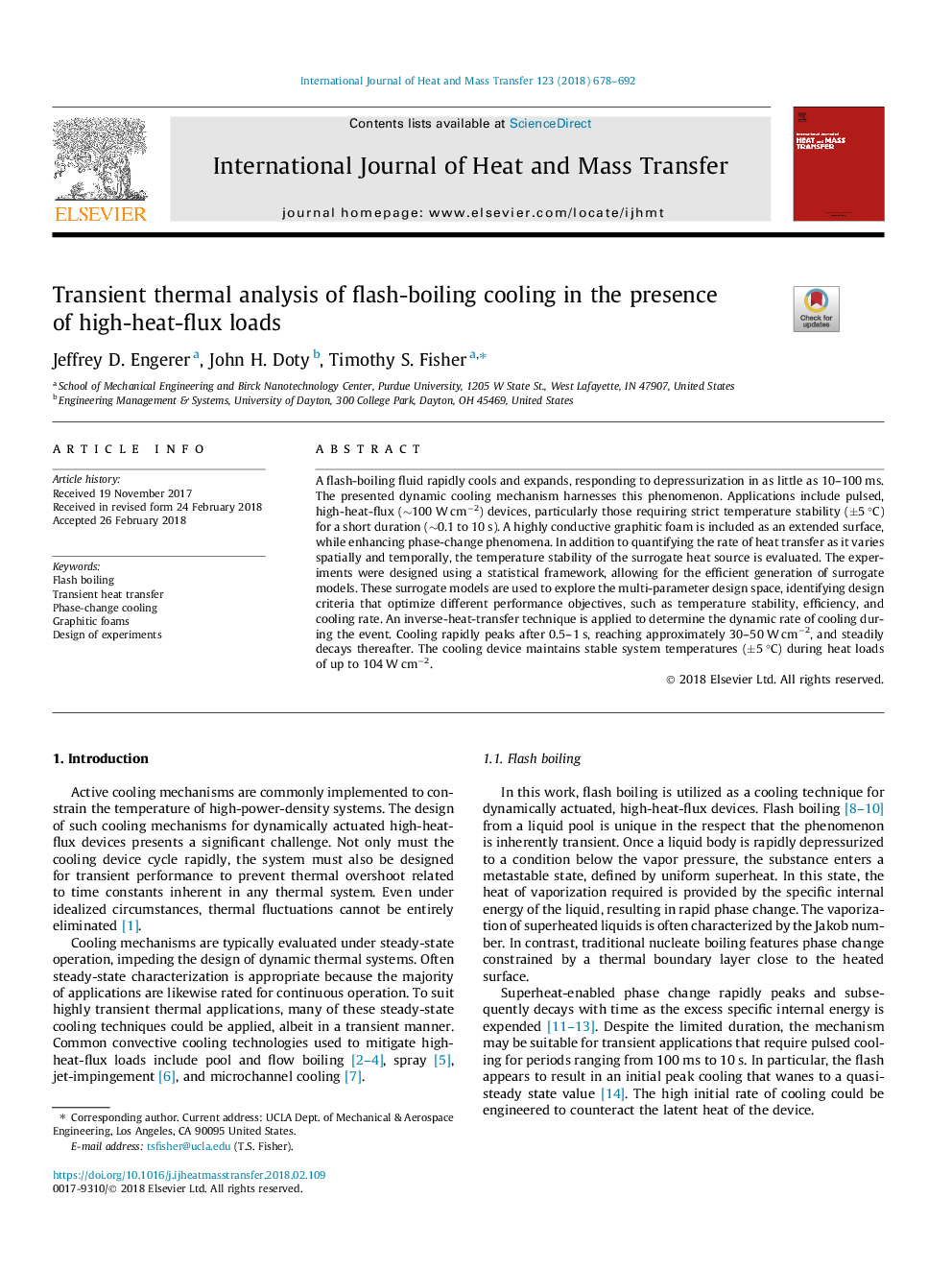| Article ID | Journal | Published Year | Pages | File Type |
|---|---|---|---|---|
| 7054296 | International Journal of Heat and Mass Transfer | 2018 | 15 Pages |
Abstract
A flash-boiling fluid rapidly cools and expands, responding to depressurization in as little as 10-100â¯ms. The presented dynamic cooling mechanism harnesses this phenomenon. Applications include pulsed, high-heat-flux (â¼100â¯Wâ¯cmâ2) devices, particularly those requiring strict temperature stability (±5â¯Â°C) for a short duration (â¼0.1 to 10â¯s). A highly conductive graphitic foam is included as an extended surface, while enhancing phase-change phenomena. In addition to quantifying the rate of heat transfer as it varies spatially and temporally, the temperature stability of the surrogate heat source is evaluated. The experiments were designed using a statistical framework, allowing for the efficient generation of surrogate models. These surrogate models are used to explore the multi-parameter design space, identifying design criteria that optimize different performance objectives, such as temperature stability, efficiency, and cooling rate. An inverse-heat-transfer technique is applied to determine the dynamic rate of cooling during the event. Cooling rapidly peaks after 0.5-1â¯s, reaching approximately 30-50â¯Wâ¯cmâ2, and steadily decays thereafter. The cooling device maintains stable system temperatures (±5â¯Â°C) during heat loads of up to 104â¯Wâ¯cmâ2.
Related Topics
Physical Sciences and Engineering
Chemical Engineering
Fluid Flow and Transfer Processes
Authors
Jeffrey D. Engerer, John H. Doty, Timothy S. Fisher,
